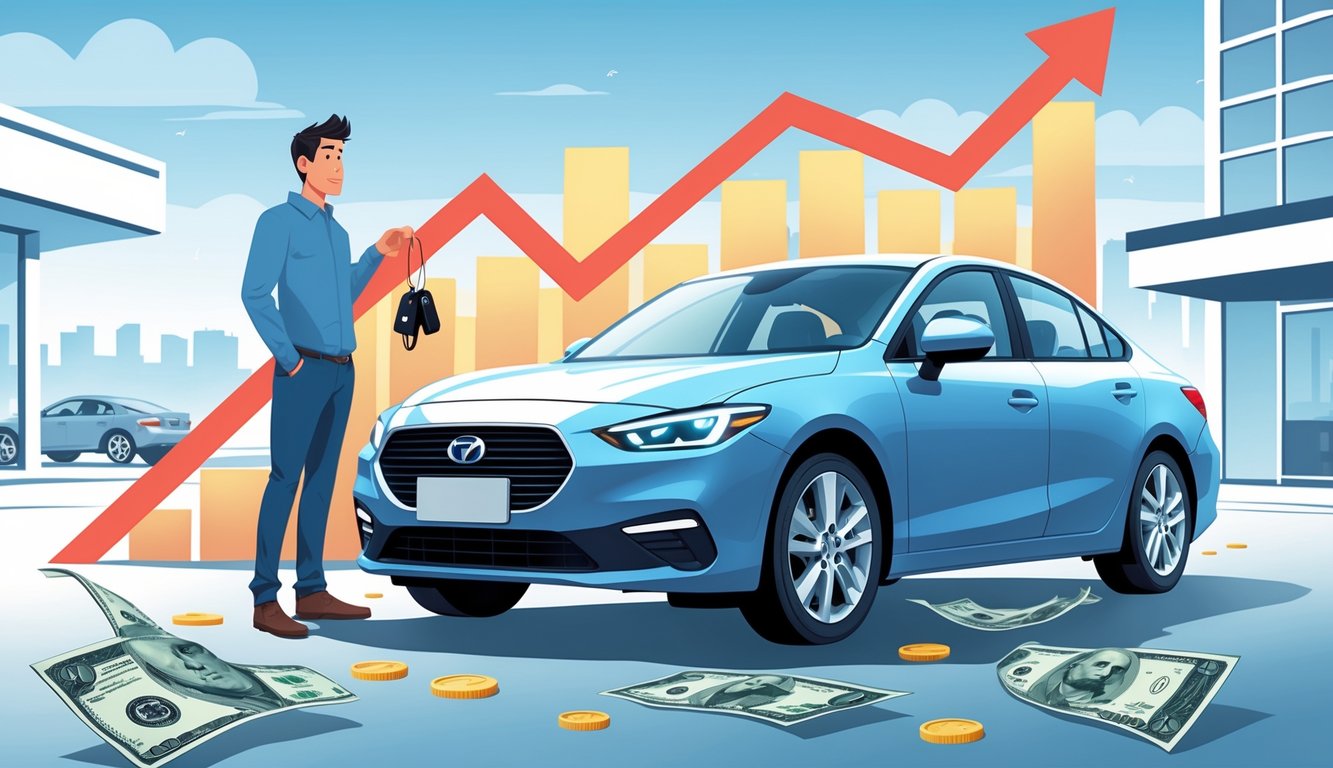
Honestly, I can’t stop thinking about this: why do so many people still act like trading in a barely-used car means you’ll get almost all your money back? Seriously, have you seen the Kelley Blue Book numbers? June 2025, average used car? $25,128. New? $48,334. But, no, apparently TikTok and my cousin’s neighbor’s brother’s story matter more than math. People hang onto these weird myths and, I swear, it’s like watching them set fire to their own cash every time they sell. Wild how confident people get, repeating stuff they heard from someone’s uncle, even though no dealer or buyer actually cares about half that nonsense.
Saw this guy at the dealership last week, totally convinced his “full service history” was a golden ticket—meanwhile, the lot had three more of his exact car, all newer, all cheaper. I’ve been the buyer and the seller, and, wow, the rules everyone clings to? Outdated. It’s like, what’s with the obsession over leather seats? Or how a scratch is suddenly worth $1,500 off, unless you’re the one selling, then it’s “barely noticeable.”
And the used car market’s just chaos now, thanks to post-pandemic shortages, but people still list their car on Facebook like the laws of depreciation don’t apply. Mention actual data from Edmunds or J.D. Power and everyone just tunes out, but they’ll still demand “top dollar.” If you’re not paying attention to the latest trends or insider tips, you might as well leave cash in the glove box for the next owner.
Understanding Car Resale Value Myths
I keep hearing people blame bad resale value on “bad luck,” like there’s a resale curse or something. It’s just depreciation and a bunch of market weirdness, but nah, everyone wants a scapegoat. Some “expert” neighbor once told me mileage is everything. After digging through sales data and Blue Book stats, I’m not convinced. It’s a mess.
What Drives Resale Value
People are shocked when their car drops $2,000 in value in one year. Shouldn’t be, but I get it. Depreciation doesn’t care about your feelings. J.D. Power has graphs—20% loss in year one, even for the “reliable” stuff. Honda Civics? Sure, they hold 60% at five years, but SUVs? They tank if gas prices spike, then trucks randomly bounce back if supply dries up. Nobody at the lot tells you that, obviously.
Here’s a fun one: one fender-bender on Carfax and suddenly your car’s worth 15% less, even if a pro fixed it. Season and region mess with prices too. Convertibles? Good luck selling in February. I watched flood-damaged cars in Texas go for more than Blue Book after a hurricane. Why? Local supply was wiped out. None of it makes sense, but here we are.
Common Misconceptions
It blows my mind how many folks think a car becomes “worthless” after it’s not new. Craigslist says otherwise—three-year-old Toyotas still fetch 70% of MSRP. A dealer tried to tell me aftermarket mods add value. Not really. Most buyers run from non-stock rims or tinted windows.
Everyone blames mileage, but honestly? Maintenance and accident history usually matter more. I see people stunned when their low-mile, garage queen gets lowballed because the model got discontinued or a new version just dropped. And that old “trade-ins are always a rip-off” myth? Sometimes, after tax credits, the trade-in deal beats a private sale. The whole thing’s just a pile of half-truths and exceptions.
The Mileage Myth: Low Mileage Isn’t Always Better
What’s with the obsession over the odometer? People ignore everything else. Low miles, but the maintenance record’s a mess? I’ve watched sellers lose thousands because they’re stuck on the wrong myth.
How Mileage Impacts Value
You’d think people would check the VIN history, not just stare at the mileage. But, no. Dealerships (I watched this at a Toyota CPO lot) use mileage brackets to instantly drop value. Cross a threshold? “Book value” drops, no matter how well you babied the brakes. Edmunds says after 100,000 miles, it all evens out, but buyers still panic.
From a recent CARFAX (2024): most sedans lose 20% value for every extra 20,000 miles in the first five years. But nobody mentions a “weekend only” car can still rot away. Bought a “garage queen” once—15,000 miles, needed $2,000 in hoses. It’s not just the miles, it’s everything else, and people forget that.
Balancing Mileage With Maintenance
I overheard a service manager say, “I don’t care if it’s 12k or 112k, just show me service stamps.” Yet sellers shout “LOW MILES!” like that makes up for missed timing belts. Miss an oil change? That’s a red flag, even if you barely drove.
Resale value follows maintenance records, not just odometer numbers. I always tell people: keep every receipt. My friend tried to trade her low-mile Civic with spotty records. Dealer lowballed her, blamed “unknown status.” New tires sometimes impress buyers more than 10,000 fewer miles.
Saw a buyer walk away because the air filter was original—seems silly, but I get it. Maintenance history beats mileage every time. Nobody brags about that in the ad, though.
Mileage Versus Age
Low mileage on a 15-year-old car? People get confused. Sitting ages a car too. I learned the hard way—oil thickens, rubber cracks, electronics get weird even if you barely drive.
Depreciation from age is slow, mileage is sharp—sometimes you get hit with both. Kelley Blue Book doesn’t know what to do with “barely used but ancient” cars. They get stuck: too old for new buyers, too unused for collectors. I’ve seen people brag about low miles, not realizing appraisers see brittle hoses and outdated emissions.
And sometimes, low miles just means it was broken or parked for years. Not always, but enough that I double-check every “grandma only” ad.
